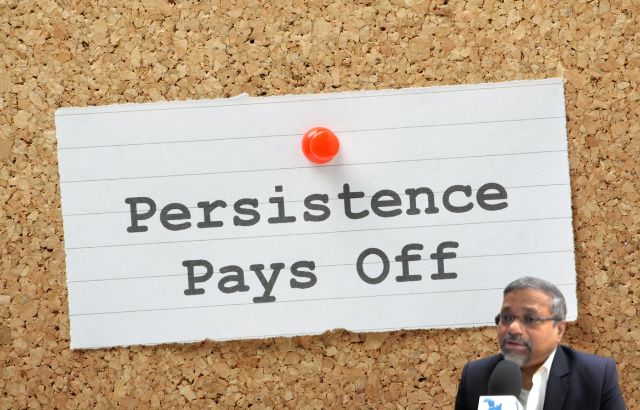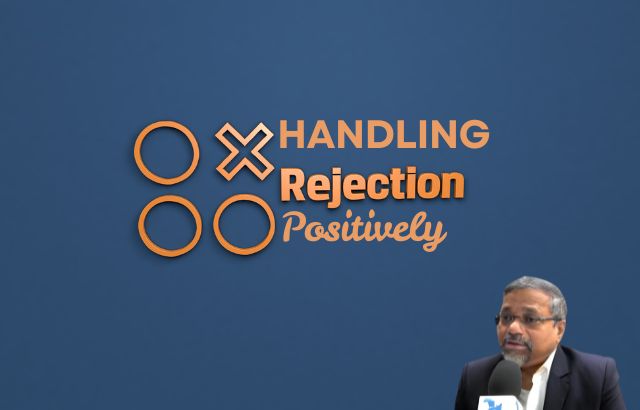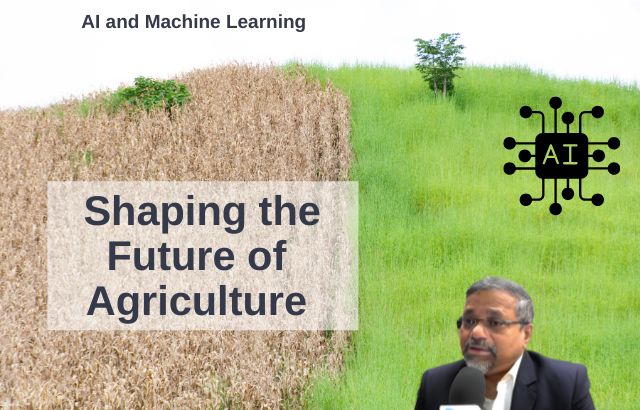Rejection, whether in personal relationships, professional settings, or creative pursuits, can be a tough pill to swallow. However, how we handle rejection often determines our future success and mental resilience. For aspiring green innovators, especially those starting their journey in sustainability and renewable energy, rejection can feel like an insurmountable challenge. Yet, it can also serve as a powerful catalyst for growth and refinement.
Jaiguru Kadam, a subject matter specialist with vast international experience in the field of green innovation, offers insightful approaches to embracing rejection in a positive and constructive way. His experiences provide invaluable lessons for new green innovators who may face rejection in the early stages of their careers or projects.
In this article, we’ll explore practical tips for handling rejection, reframing it, and how seasoned innovators like Jaiguru Kadam use rejection as a stepping stone toward future success. Whether you’re just starting in green innovation or navigating your way through early failures, these tips will help you maintain resilience and stay focused on your long-term goals.
1. View Rejection as Part of the Process
For new green innovators, rejection is inevitable. Whether it’s a proposal for a sustainable technology or a pitch to potential investors, not every idea will be accepted right away. The key is to view rejection as part of the creative process, not a personal failure.
Jaiguru Kadam, having navigated through his own early rejections, advises that young innovators should embrace rejection as an opportunity to refine their ideas. He recalls pitching an early renewable energy project that received multiple “no’s.” Instead of feeling defeated, he used the feedback to adjust and improve the technology, eventually landing a successful deal with an international partner.
Example: A new green tech startup might have its prototype rejected by investors, but that rejection could reveal areas for improvement—whether in cost-efficiency, scalability, or impact. By listening to feedback and iterating, rejection leads to a better, more market-ready product.
Actionable Tip for Green Innovators:
Understand that rejection is common in green innovation, where ideas are often ahead of their time. Use each “no” as data for improvement, focusing on how you can enhance your solution.
2. Reframe Rejection as a Learning Opportunity
Jaiguru emphasizes that rejection should not be seen as a dead-end but rather as a valuable learning experience. In the world of green innovation, learning from failures can lead to breakthroughs that shape future successes.
For instance, when Jaiguru faced setbacks in developing a sustainable urban design, he didn’t let it deter him. Instead, he analyzed the feedback and took time to understand why his ideas were rejected. This led to a new approach, where he integrated the suggestions of experts in urban planning, making his vision more feasible and sustainable.
Example: A green innovator’s proposal for a waste-to-energy project might be rejected due to concerns about feasibility. Instead of giving up, taking the time to understand the concerns—such as regulatory barriers or technical limitations—could help refine the project into a more viable solution.
Actionable Tip for Green Innovators:
After a rejection, ask for constructive feedback. What can you learn from it? What areas can be improved? This feedback loop is key to growth in the green innovation space.
3. Persist Through Short-Term Setbacks
Even the most successful green innovators, including Jaiguru Kadam, have faced rejection. What separates those who succeed from those who don’t is persistence. Many new innovators get discouraged after a few rejections, but Jaiguru’s experience shows that long-term vision and consistent effort are essential for breakthrough success.
Example: Jaiguru spent years refining a sustainable agricultural technology that was initially rejected by several major agricultural firms. Instead of giving up, he kept improving the technology, focusing on environmental and economic benefits. Eventually, his persistence paid off when a large corporation saw the long-term value of his work.
Actionable Tip for Green Innovators:
If you truly believe in your green innovation, don’t let temporary setbacks stop you. The green industry is evolving, and persistence is often rewarded. Stay focused on the bigger picture.
4. Leverage Support Networks
Handling rejection becomes easier when you have a strong support network. For new green innovators, connecting with mentors, fellow innovators, and industry professionals can make a huge difference. Jaiguru Kadam often credits his success to the networks he built throughout his career, both within and outside the green innovation field. These networks not only provide encouragement but also offer valuable advice and new perspectives.
Example: Jaiguru Kadam was once struggling with a renewable energy project when he turned to a network of like-minded professionals. One of them offered a key piece of advice that turned the project around, leading to a breakthrough in his work.
Actionable Tip for Green Innovators:
Build a network of supportive peers and mentors in the green innovation space. Lean on them when you face rejection—they can offer perspective, encouragement, and even introduce you to new opportunities.
5. Adapt and Pivot When Necessary
Sometimes, rejection isn’t about the idea being bad, but about the timing or market conditions. Jaiguru Kadam has often adapted his approach based on evolving trends in green innovation. He emphasizes that being able to pivot when necessary is an essential skill for green innovators.
Example: Jaiguru’s early attempts at developing solar-powered vehicles faced rejection, largely because the technology was too advanced for the market at the time. Rather than abandoning the idea, he shifted his focus to solar-powered urban infrastructure, where there was immediate demand. This pivot eventually led to widespread adoption of solar technology in city planning.
Actionable Tip for Green Innovators:
If one approach isn’t working, don’t be afraid to pivot. Market conditions change, and being able to adapt to new opportunities or challenges is a key skill for any innovator.
6. Stay Focused on the Long-Term Vision
Finally, Jaiguru Kadam advises aspiring green innovators to keep their long-term vision in mind. The journey of innovation is filled with ups and downs, but staying focused on the ultimate goal can help you maintain motivation, even when faced with rejection. Whether your goal is to create sustainable energy solutions, revolutionize agriculture, or build eco-friendly cities, having a clear vision can help you stay the course.
Example: Despite multiple early rejections, Jaiguru remained focused on his overarching vision of creating a sustainable future. Today, his work in renewable energy and green urban spaces is shaping the way cities are designed and built worldwide.
Actionable Tip for Green Innovators:

Remember your larger mission. When faced with rejection, revisit your long-term vision and keep working toward it, step by step.
Conclusion: Rejection as a Catalyst for Growth

Rejection in the world of green innovation can feel like a major setback, but as Jaiguru Kadam’s experience shows, it can also be a powerful catalyst for growth. By embracing rejection as a natural part of the innovation process, reframing it as a learning experience, and staying focused on long-term goals, new green innovators can use rejection as a stepping stone to eventual success.
So, if you’re a new green innovator facing rejection, take a deep breath. Rejection isn’t the end—it’s often just the beginning of something even greater. Keep learning, refining, and innovating, and your persistence will eventually pay off.
Handling Rejection Positively: A Green Surfactants/Adjuvants Example

In the emerging field of green surfactants and adjuvants—chemicals used to enhance the effectiveness of pesticides, herbicides, and other agricultural products—rejection is a common hurdle, particularly because the market is traditionally dominated by synthetic chemicals. Developing green, eco-friendly alternatives that perform just as well (or better) than conventional ones can face resistance from both manufacturers and farmers who are used to the established products.
Example:
Jaiguru Kadam, a seasoned innovator in sustainable agricultural solutions, recalls an early experience in his career where he pitched a new line of biodegradable surfactants derived from renewable plant sources to a major agricultural company. The goal was to replace the petroleum-based surfactants traditionally used in herbicides with a greener alternative that was less harmful to the environment and non-toxic to beneficial insects like bees.
However, the proposal was initially rejected. The company’s executives expressed concerns about the performance of the new surfactants, fearing that they wouldn’t match the efficiency of synthetic chemicals. They also questioned whether farmers would be willing to switch to a new product, given the price difference and the initial resistance to change in the agricultural sector.
Instead of viewing this rejection as a failure, Jaiguru took the feedback and used it as a stepping stone. He revisited the formulation, improving the surfactant’s ability to work effectively under various environmental conditions. He also worked on educating farmers about the environmental and long-term economic benefits of using green surfactants—such as reducing soil degradation and protecting local ecosystems.
After several rounds of testing and refinement, Jaiguru was able to convince the company to conduct a pilot trial. The results were impressive: the green surfactants performed equally well as the synthetic ones, with the added benefit of being biodegradable and safer for surrounding wildlife.
Eventually, the company decided to incorporate the green surfactants into their product line, and the technology gained widespread adoption among organic farmers and those committed to reducing their environmental footprint.
Key Takeaway for Green Innovators:
This example shows that rejection doesn’t mean the idea is flawed—it simply means there’s room for improvement or adjustment. By refining the product, addressing concerns, and demonstrating the long-term value, Jaiguru transformed rejection into a learning opportunity, ultimately leading to greater success in the green surfactants market. For any green innovator, persistence and adaptability are crucial in turning rejections into breakthroughs.











